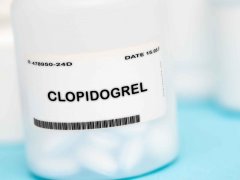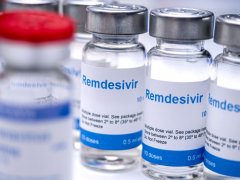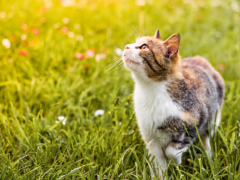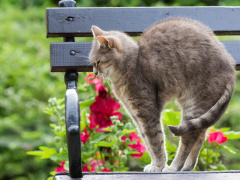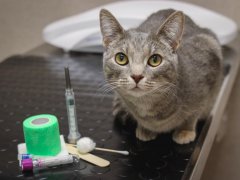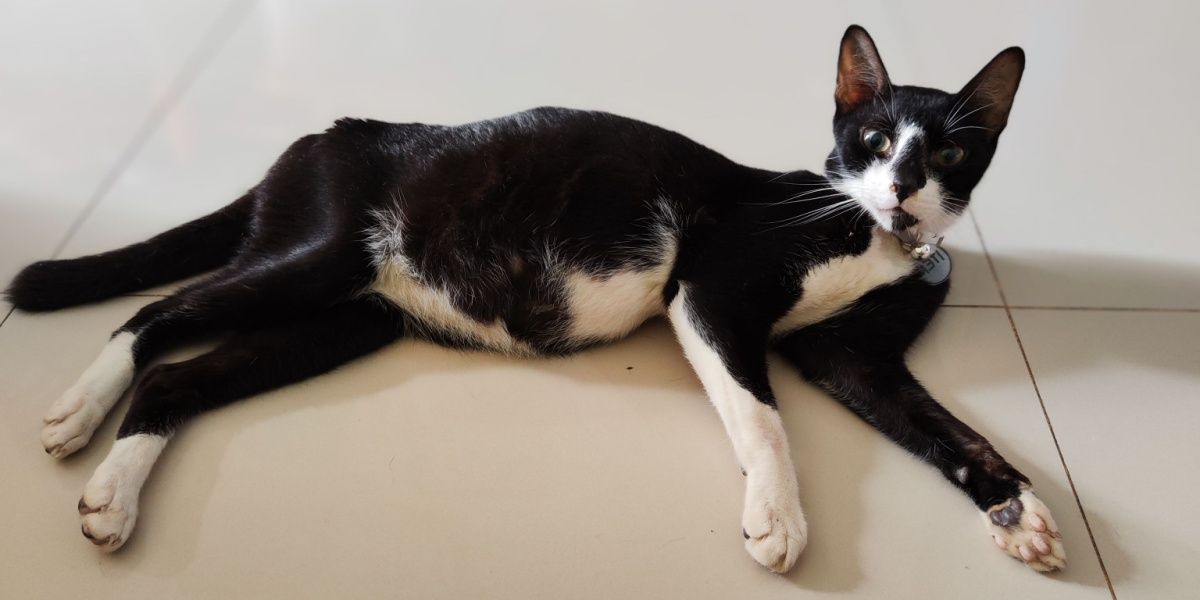
Victoria Makarome / Shutterstock.com
While an unusual name for a medication, GS-441524 has turned the tide in treatment of cats with feline infectious peritonitis (FIP). In this article you’ll learn how it works to treat FIP, what treatment looks like for an affected cat, and how GS is prescribed within the US.
GS-441524 for Cats

About GS-441524 for Cats

GS-441524 compounded by Stokes Pharmacy is one compounding option for GS that is available. The BOVA GS-441524 they use is the same used in many of the GS studies treating cats for FIP. Stokes Pharmacy / StokesPharmacy.com
GS-441524 an antiviral treatment, most specifically for treatment of feline infectious peritonitis (FIP). GS is a metabolite of a related antiviral medication, remdesivir. This means that when remdesivir is broken down by the body, it is converted into GS-441524.
Remdesivir only comes as an injectable solution. While oral use of the injectable solution has been studied, the expense and limited availability of Remdesivir in many countries makes this impractical for widespread use.
By comparison, clinicians and researchers have found GS-441524 to be extremely effective against FIP as an oral medication. While it still may be considered expensive, only one course of treatment is needed in many cases and the success in treating FIP with GS alone exceeds 85%.
What is FIP?

A typical appearance for many FIP cats, with a swollen belly from abnormal fluid buildup. M. Sam / Shutterstock.com
Feline Infectious Peritonitis (FIP) is a viral illness most often infecting young cats and kittens. Until only a couple years ago, it was almost invariably fatal.
The condition of FIP occurs when a very common (and usually harmless) virus called feline enteric coronavirus (FECV) infects a cat. Infections with FECV are widespread and extremely common. Anywhere from 50% of cats in a single cat home up to 90% of cats in multicat households will acquire an FECV infection at some point in their lives. But in a large majority of cats, symptoms are mild, transient, or never seen at all.
In only about 5% of cats, FECV will undergo a mutation where it now causes FIP. What causes this mutation in only some cats is not well understood or predictable. When FECV mutates into a form that can cause FIP, it is often then referred to as FIP virus.
How is There Now a Treatment for FIP?
For many decades, the only goal in treating a cat with FIP was to limit the impacts of the disease on a young cat for as long as possible, but there was no effective treatment. Nearly all cats would tragically die from the disease.
Ironically, COVID-19 helped to change this. A great deal of antiviral research occurred during COVID’s initial outbreaks. Since COVID-19 is also a coronavirus, researchers began to apply antiviral treatments found effective to treat COVID to see if they would also treat FIP.
The results were quite staggering, with a majority of treated cats not only getting better in a relatively short period but achieving complete remission in many cases. Of the initial treatments studied, GS-441524 stood out as the most effective and practical.
For a few years, this did lead to a black market for GS. Veterinary professionals and cat owners were desperate for access to treatment but the medication was considered too untested with limited studies and could not be legally prescribed, especially in the US. An actual labeled commercial product would take years to develop and the FDA would not relent on approving an undeveloped medication.
A group called FIP Warriors was founded to assist cat owners in acquiring GS. This led to conflicts with the FDA shutting down their social media pages and veterinarians and owners facing legal ramifications for trying to obtain GS to treat cats with FIP.
But fortunately, the skies cleared as more scientific clinical studies were published demonstrating GS treatment’s high survival rate and relative safety. In mid 2024, the FDA announced that they would no longer enforce new animal drug requirements for products compounded from GS-441524.
This now allowed certain licensed compounding pharmacies to compound GS. And because no commercial product for GS is available, the FDA allows compounded products to be prescribed to treat FIP, given how fatal of a disease it is.
This allows veterinarians to now prescribe GS-441524 through certain approved licensed compounding pharmacies to treat their FIP patients.
Dosing Information for Cats
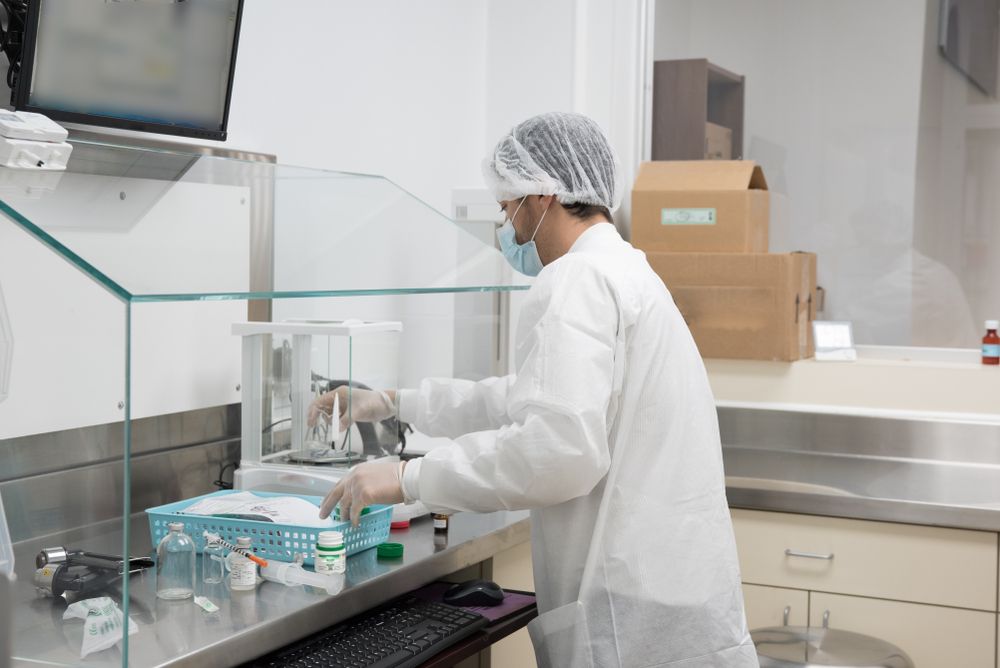
GS-441524 can only be made for prescription in the US by approved licensed compounding pharmacies. semyon lorberg / Shutterstock.com
GS-441524 is not labeled for use in cats and is therefore always prescribed off-label by veterinarians. As GS does not carry a human label either, it can only be prescribed through approved licensed compounding pharmacies.
The following information should not be used to replace a veterinary visit or alter your vet’s prescribing information. Always consult with your own vet before starting a medication or adjusting a medication dose for your cat.
Commonly accepted dosing for GS-441524 can be found through the FIP VetGuide. The most common accepted dosing range is 10-20 mg/kg per day. Most cats with FIP have an effusive or “wet” form where fluid builds up in their abdomen. But there are other forms including ocular and neurologic FIP. Doses may need adjustment depending on the form present.
The standard treatment period for GS (and other medications like molnupiravir) is 84 days, or 12 weeks. There is one study that showed similar success at half that duration with only 42 days. Further research is pending, but 84 days is still the standard at the time of this publication.
What to Expect with GS-441524 Treatment
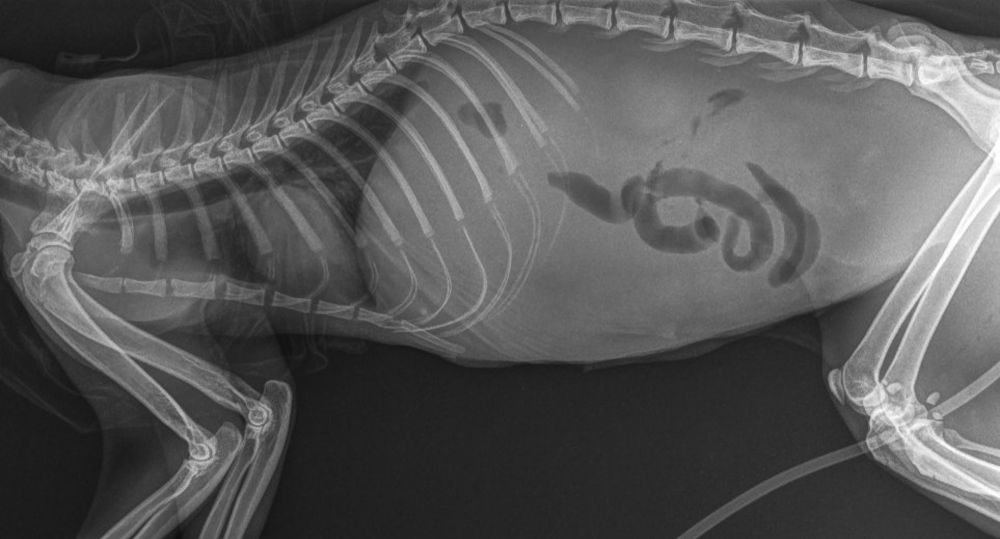
Abdominal fluid build-up like this seen on x-ray is common in FIP cats. Treatment with GS-441524 will see this fluid start to resolve within only 1-2 weeks with complete resolution of excess fluid by one month. Vetlife / Shutterstock.com
The FIP Vet Guide has an excellent timeline for what to expect in a cat with FIP after GS-441524 is started, but here are the highlights.
Within only 12-36 hours of starting treatment, a cat’s fever will break and return to normal body temperature. Improvements in energy and appetite will be seen.
Within just the first 3-5 days, most cats will show significant improvement. Within 2 weeks, fluid build up in the belly, called abdominal effusion, will be noticeably less. Ocular signs and neurologic signs have typically resolved.
Within the first month, all fluid build up is usually gone. Cats will show noticeable (good) weight gain.
Treatment with GS usually continues because improvement may take longer in some cats and because continuing treatment past the noticeable resolution of illness signs is important to ensure that the virus is completely gone.
Relapses and treatment failures do occur but are uncommon. When they do happen, they will usually occur within the first couple of weeks after treatment is discontinued.
In these cases, other medications used to treat FIP, like molnupiravir or remdesivir, may be used.
GS may also be used in an injectable form. This is usually only in cases where orally dosing a cat is not possible, or if disease is severe and a quicker onset of action is needed. Oral dosing of GS has also been combined with injectable remdesivir for similar reasons.
How to Administer GS-441514 to Cats
Because GS is only available as a compounded medication, you can work with your vet to decide on the form that will be the easiest to administer. Forms include compounded tablets, capsules, chewables, and liquids. The forms may vary by what a specific compounding pharmacy offers.
For a list of compounding pharmacies that offer GS and the forms they provide, see the US Pharmacies Offering Compounded FIP Treatment list.
Side Effects of GS-441524 for Cats
Fortunately, the side effects of GS appear to be few and mild:
- Nausea
- Drooling
- Lethargy
Some mild abnormalities in laboratory parameters have been described as well. Mild elevations in ALT, a liver value, have been seen. However, researchers were uncertain if this was related to treatment or part of the FIP infection itself.
Elevations in eosinophils and lymphocytes, two types of white blood cells, were seen less often. Creatinine, a kidney value, has shown mild increase, but not significantly. A complete blood count (CBC) and chemistry panel are recommended every 4-6 weeks during treatment to monitor for lab work changes.
It does not appear that any changes have lasting effects beyond the end of treatment with GS.
Overdose and Emergencies
There is little known about overdose situations with GS-441524. Studies have been focused more on efficacy of treatment at certain accepted doses vs. evaluating toxicity.
There have been reports of more serious adverse effects when black market products are used. Concentrations of GS in black market products have been found to not match their label. Drug concentration information has been reported as confusing in these products as well, which may lead to inappropriate doses.
Contaminants like heavy metals have also been found in black market products. Now that there are forms of GS more easily available and with much better quality control from licensed compounding pharmacies, black market products should be avoided.
If you are concerned your cat is experiencing side effects from GS-441524 or that an overdose has occurred, it is best to contact a 24-hour pet poison consultation center like one of the following below. Data is certainly being gathered by toxicologists now that GS is being used more often and they will have the most up to date information to share.
- ASPCA Animal Poison Control Center (1-888-426-4435)
- Pet Poison Helpline (1-855-764-7661)
Potential Drug Interactions With GS-441524
GS-441524 has been used often with other supportive treatment medications for FIP with no known interactions. These include:
- Glucocorticoid steroids (prednisolone)
- Maropitant (Cerenia)
- Mirtazapine (Mirataz)
- Gabapentin
- Opioid pain medications (like buprenorphine)
The following two interactions are the only ones documented.
- Hydroxychloroquine (not typically used in cats): may decrease antiviral effect of remdesivir in humans. As GS is a metabolite of remdesivir, use together is not advised.
- Itraconazole (antifungal): synergistic (additive) effects with GS0441524 have been seen. This does not mean they can’t be used together, but dosing adjustments may be warranted.
How to Store GS-441524
GS-441524 comes as a compounded medication. Compounding forms vary considerably, even between pharmacies for the same medication. When you receive the medication, it should have clear storage instructions that come with it. If not, the best thing to do is to contact the compounding pharmacy itself for further information.
Drug Dosing Disclaimer: We are only able to provide doses for medications that are FDA approved for use in cats and only as the label guidelines dictate. For medications that are used off-label we can only provide guidelines and safety information for use. Safe and appropriate dosing for off-label medications can only be determined by a primary care veterinarian.
We encourage you to work with your veterinarian to determine if a particular medication is appropriate for your cat. Changing or adjusting a dose for your cat on your own without consulting with a veterinarian can carry risk. We do not encourage use of medications prescribed for human use in pets without first consulting with a primary care veterinarian.
-
A Budde, J., & A McCluskey, D. (2023). GS-441524 [Professional app]. In Plumb’s Veterinary Drug Handbook (10th ed.). Wiley Blackwell.
-
Renner, K. A., Cattin, R., Kimble, B., Munday, J., White, A., & Coggins, S. (2025). Efficacy of oral remdesivir in treating feline infectious peritonitis: a prospective observational study of 29 cats. Journal of Feline Medicine and Surgery, 27(5). https://doi.org/10.1177/1098612x251335189
-
Taylor, S. S., Coggins, S., Barker, E. N., Gunn-Moore, D., Jeevaratnam, K., Norris, J. M., Hughes, D., Stacey, E., MacFarlane, L., O’Brien, C., Korman, R., McLauchlan, G., Torres, X. S., Taylor, A., Bongers, J., Castro, L. E., Foreman, M., McMurrough, J., Thomas, B., . . . Tasker, S. (2023b). Retrospective study and outcome of 307 cats with feline infectious peritonitis treated with legally sourced veterinary compounded preparations of remdesivir and GS-441524 (2020–2022). Journal of Feline Medicine and Surgery, 25(9). https://doi.org/10.1177/1098612x231194460
-
FIP Treatment Guide for Veterinary Professionals. (n.d.-b). FIP Vet Guide.
-
Renner, K. A., Cattin, R., Kimble, B., Munday, J., White, A., & Coggins, S. (2025). Efficacy of oral remdesivir in treating feline infectious peritonitis: a prospective observational study of 29 cats. Journal of Feline Medicine and Surgery, 27(5). https://doi.org/10.1177/1098612x251335189
-
Gallegher, A., W. G. Gibson, T., J Hall, E., Blois, S., Defarges, A., & Matsuyama, A. (2024, September). Feline Enteric Coronavirus. Merck Veterinary Manual, Professional Version.
-
Williams, K., Hunter, T., & Ward, E. (n.d.). Feline Infectious Peritonitis. VCA Animal Hospitals.
-
FDA. (2024, May 10). FDA Announces Position on Use of Compounded GS-441524 to Treat FIP. Food and Drug Administration.

